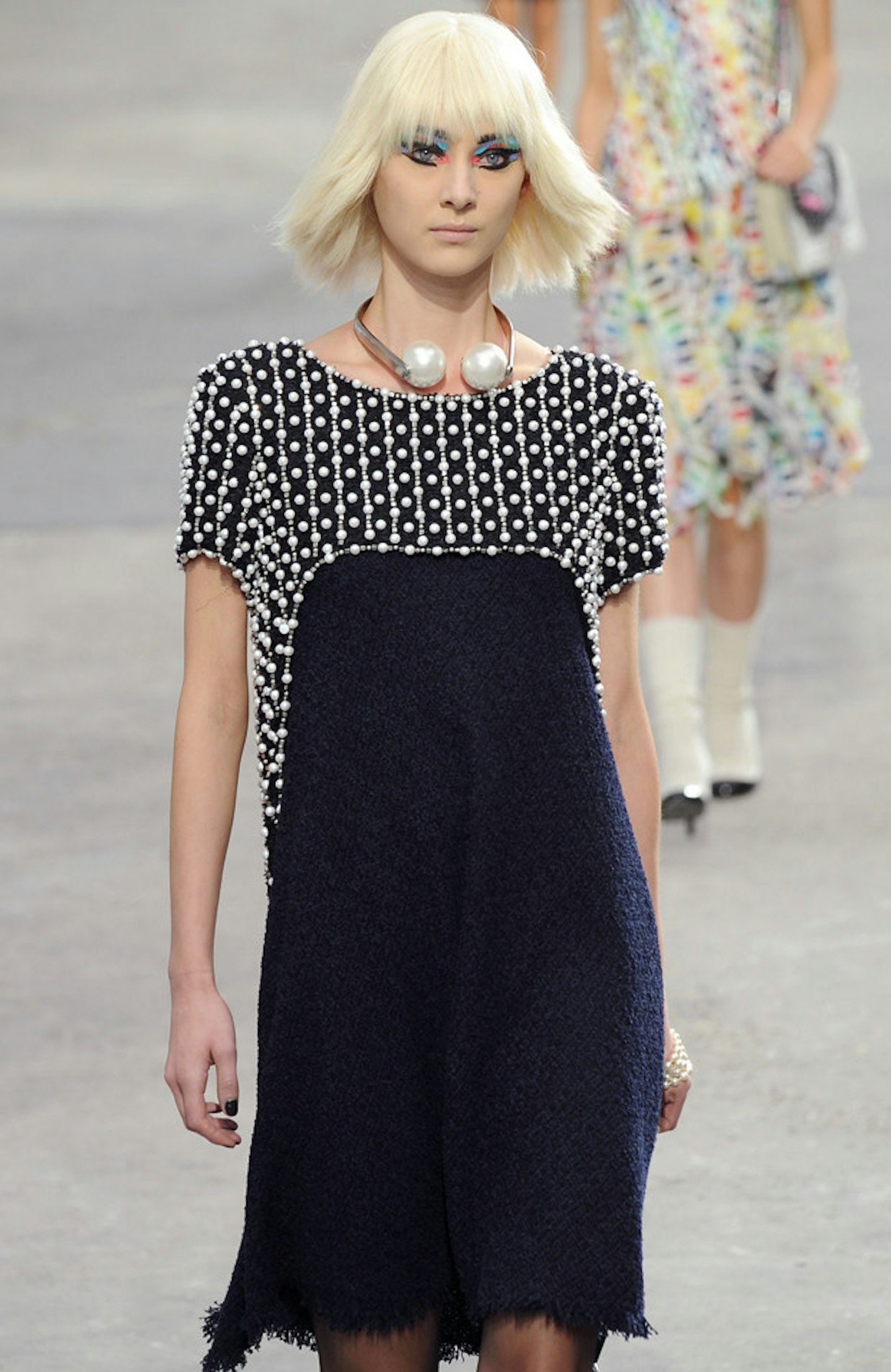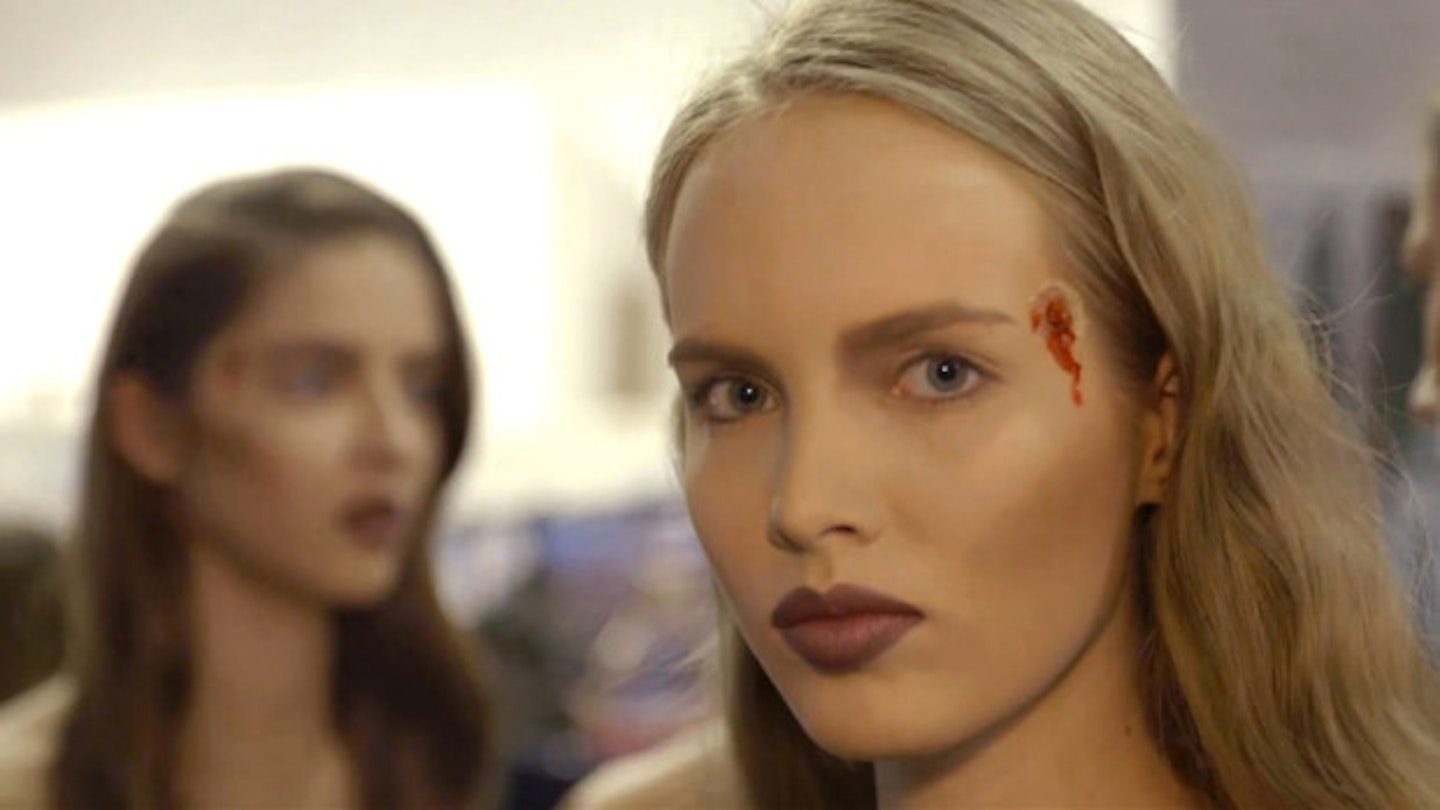There was disbelief and rather a lot of controversy when the organisers of Ukraine Fashion Week decided the biannual event should go ahead – despite the conflict ravaging the country. 'We can’t leave Ukrainians without any opportunity to be proud of their talented compatriots,' Iryna Danylevska told us at the time. 'Neither can we deprive the fashion community of a chance to yet again prove that Ukraine is a unique country and that its citizens and their courageousness and talent are worthy of applause.’
But what was the six-day event actually like? VICE's brilliant host/producer, Charlet Duboc, went to Kiev to film an incredible documentaryabout it as part of VICE's ongoing* Fashion Week Internationale* series, which focuses on 'global fashion weeks beyond London, Paris and Milan' in a way that is anything but frivolous or trivial. Her findings? Ukraine put on one 'hell of a ballsy' fashion week.
**The Debrief: So why did you think it was important to tell the story of Ukraine Fashion Week?
**
Charlet Duboc: I felt compelled to go and see what on earth this ballsy fashion week thought it was doing trying to pull off a fancy event off the back of [Kiev's central square and heart of the riots] Maidan! I felt like I might be able to experience something that would capture a moment in contemporary European socio-political history, by taking a look at the cultural fallout. Plus, I was dying to see Maidan for myself after watching the news reports and hearing about it from our news crew who had been there since November.
**DB: How did the fashion designers feel about putting on catwalk shows amidst such devastation?
**
CD: There were mixed feelings. The general atmosphere was one of reverence and resilience and even a bit of shock. People seemed to be living in the moment and taking each day at a time. All the designers who showed at the fashion week had their justifications – from the fact that they wanted to show that life continues as normal, to the simple fact of trying to keep business. Other designers were driven by a desire to channel all their emotions about the national climate in a creative way on the catwalk or into their collections – anger, grief, resilience. But I also spoke to a couple of designers outside of the events who bemoaned the fashion week, saying they were boycotting it as it was distasteful to put on a high-end event after everything that had happened.
**DB: In the film, you stumble across row upon row of Molotov cocktails on the pavement. Were you surprised that no efforts had gone into hiding the weapons, given that fashion week was about to commence? **
CD: I was surprised, of course, because I'd never seen anything like that before, but also amazed. It was bizarre – like I'd stumbled on a gruesome art installation – not something we're accustomed to seeing in modern-day Europe, so I had to reconcile the fact that my brain was telling me 'this is not real' because I just couldnt relate to it. Equally, I was just sort of impressed at how prepared, organised and serious these people were.
DB: So not that much effort had gone into cleaning up the city, despite the press arriving?
CD: No. Most people do not want the city cleaned up – Maidan has become a sort of living, breathing memorial to what's happened. People don’t want the world or their government to forget. It will remain like that until the elections – as a strong symbol of solidarity, a reminder that the people won’t stand for corruption or their rights being violated. There’s actually something darkly beautiful about the way central Kiev looks at the moment. The people have made it how it is, and it was born out of a struggle for life and for justice.
DB: What surprised you the most during your time in Kiev?
**CD: **The show with no music. When it started, I genuinely thought there was a technical hitch – it was a bit awkward. Then everyone realised it was a minute of silence for the victims and it was incredibly moving. I was a bit overwhelmed. Also, one other thing – which didn’t surprise me as I'd been to Ukraine before, but it is still an elephant in the room – is that there are basically no black people in Ukraine. I saw no ethnic minorities at all (apart from the scene with Valentine Bo). That was weird, to have such little diversity. It would maybe change eventually if Ukraine ever joined the EU.
DB: We also had a slight face-palm moment when the model – depsite having a very effective bloody bullet hole painted on to her perfectly made-up face – said she knew nothing about the referendum happening the day after the show.
CD: Haha, the story is quite heavy and serious, so we had to throw in a couple of light moments! I think it also shows that there’s a lot of hype in the media about Ukraine. The way it is portrayed to us in the West makes you think everyone in Ukraine goes to bed in riot gear and is glued to breaking news. But, in fact, life is going on as normal for many people. You know, not everyone is going to be the most clued-up intellectual with their finger on the pulse. Some more privileged people are able to just turn a blind eye, or they are young and they don't care. When I was a young teen, I certainly didn’t give a shit about the news – I was much more interested in make-up.
DB: **And what about the fashion itself? Any amazing new designers we need to keep our eye on? **
CD: Ukrainian designers are lauded for being amazing – a lot of the really good ones are on Not Just a Label. Apparently, their collections sell out the fastest! I'm not sure that riot gear or Ukranian national colours are gonna be the NBT, but designer [featured in the documentary] Frolov is definitely one to watch.
DB: So the designers weren't loathe to show their collections, despite everything that was going on?
CD: Definitely not. Everyone is so proud of their fashion week – even exclusive Chanel face Evelina Samsonchyk [the first European model to be signed by Chanel on a permanent basis, seen on the catwalk, below] received special dispensation from Karl himself to take time off the Chanel tour to walk in the fashion week of her homeland – that’s how much people want to represent their country. I think that Ukrainians, on the whole, are pretty patriotic, which comes from being a newish nation still trying to push its cultural identity. Ukrainians are also keen in the first instance to distinguish themselves from Russian fashion.

Follow Pandora on Twitter @PINsykes
Pictures: Vice, Jason Lloyd-Evans
This article originally appeared on The Debrief.
